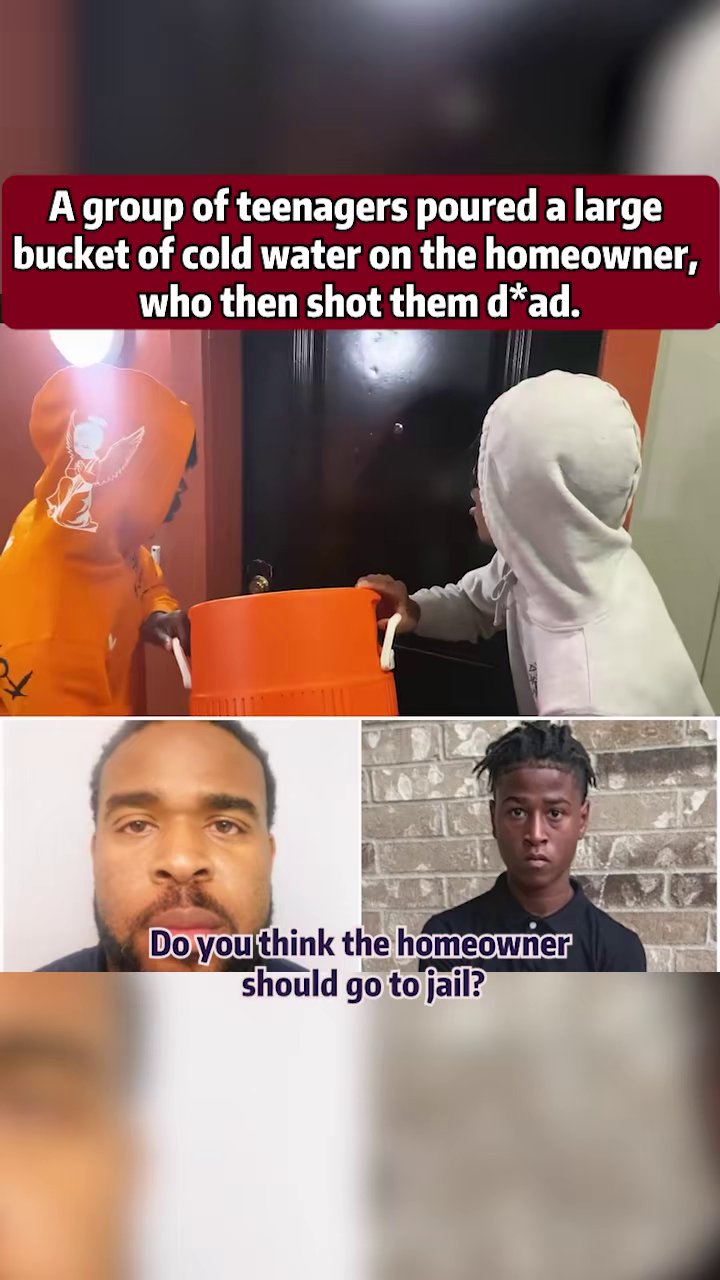The unsettling case discussed in the video revolves around an event that began as a reckless teenage prank but spiraled into a fatal confrontation, resulting in the death of a young boy and the conviction of a homeowner. The incident brings into sharp focus the complex legal and ethical questions surrounding self-defense, proportionality of force, and the consequences of juvenile delinquency.
The video recounts a troubling pattern of harassment experienced by the homeowner at his residence, allegedly perpetrated by a group of local teenagers. These actions, described by authorities as more than a one-time occurrence, reportedly involved the teens knocking on the homeowner’s door, primarily during the early morning hours, and then immediately fleeing—a behavior that caused ongoing distress and disruption within the entire community. It was a pattern that, according to reports, had been consistently ignored despite previous warnings given to the teens.
The situation escalated dramatically during one such early morning incident. The video shows footage purporting to be of the confrontation, where a group of teenagers were preparing to pour a large bucket of cold water on the homeowner as a “prank.” As the homeowner opened his door, the water was splashed, and in a moment of panic, rage, or both, the homeowner reacted with lethal force. He emerged from his dwelling, reportedly armed with a weapon, and fired at the fleeing youths.
Tragically, one of the teenagers, a 16-year-old boy named Agus, was struck. The video describes Agus as being at the end of the group and having been struck while he was attempting to escape. The other teens, hearing the sound of the weapon, scattered and managed to get away. Agus, however, sustained severe injuries that he did not survive. He d*ed as a result of the shooting.
Upon the arrival of law enforcement, the homeowner was quickly taken into custody. The police stated that the arrest was made despite the history of the teenagers harassing neighbors, because the homeowner’s response was considered disproportionate and a severe overreach of any possible self-defense claim, especially since the teens were fleeing when the shots were fired.
The case proceeded to the courts, where the emotional stakes were incredibly high. Agus’s mother, known in the video as Vargas, pursued a lawsuit against the homeowner. Overcome with grief, she found it inconceivable that a homeowner would use a deadly weapon on a 16-year-old boy. The prosecution, representing the state’s interest and the family in the civil suit, accused the homeowner of m*rder and demanded a significant sum of $1.2 million in compensation for the wrongful death of her son.
The defense for the homeowner attempted to place the blame on the deceased and his companions, arguing that the lethal consequence arose directly because the teenagers initiated the confrontation by pouring water on the homeowner. Essentially, they argued that the teens’ actions were the catalyst for the tragic outcome.
However, the presiding judge took a firm stance against the homeowner’s actions. The judge pointed out that the appropriate and legal course of action for a citizen facing ongoing harassment was to contact law enforcement, not to resort to a deadly weapon. The judge ruled that the homeowner’s decision to pursue and fire at the fleeing teenagers, who posed no imminent threat to his life once they turned to run, clearly moved the action beyond the boundaries of self-defense.
In the final judgment, the court ultimately agreed with the prosecution that the homeowner’s actions constituted m*rder. The sentence was severe: the homeowner was sentenced to 15 years in prison and was mandated to pay the family $850,000 in compensation.
This verdict ignited a fervent debate across the community and social media. The video concludes by asking a direct question to the viewer: Do you think such a judgment is fair to the homeowner?
On one side of the debate are those who feel that the homeowner was pushed to his breaking point by continuous, ignored harassment from the youth. They may argue that constant psychological strain and fear in one’s own home could lead to a momentary lapse of judgment, and that the youths were ultimately responsible for instigating the chain of events. From this perspective, the severity of the prison sentence and the financial penalty seem harsh.
On the other side are those who staunchly support the court’s decision, emphasizing the fundamental principle that the taking of a life, especially a young life, is an irreversible act that cannot be justified by a mere prank or property crime. They assert that the homeowner had a clear, non-lethal alternative (calling the police) and that his choice to fire a weapon at a fleeing person, thereby turning a misdemeanor into a fatality, was an indefensible act of violence. The sentence, in their view, reinforces the legal principle of proportionality of force and the sanctity of life. The large compensation figure serves as a measure of accountability for the devastating loss inflicted upon the mother and the family of the deceased boy.
The case serves as a grim reminder of how easily non-violent provocation can escalate into a tragedy when combined with access to lethal force and a perceived breakdown of communal order or law enforcement intervention. The question of whether the punishment fits the crime remains a deeply divisive issue in the public sphere, highlighting the ongoing tension between homeowner rights and the limits of self-defense.

